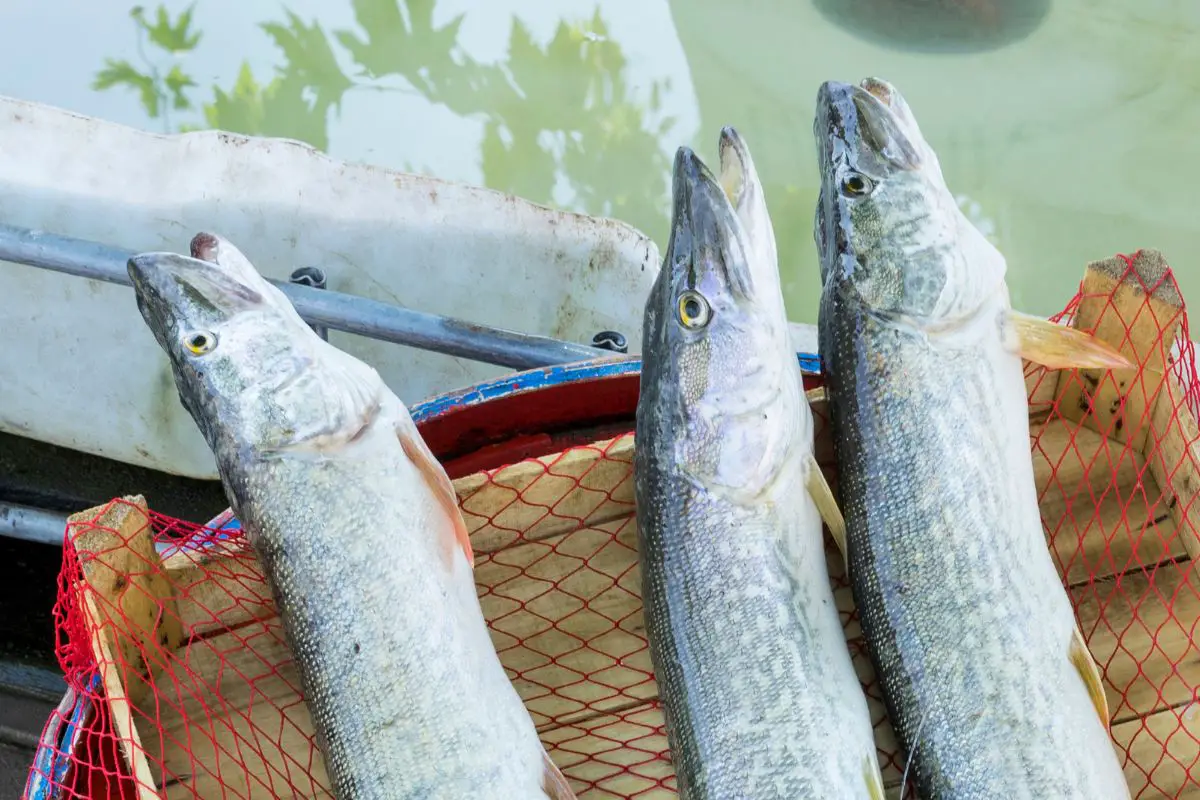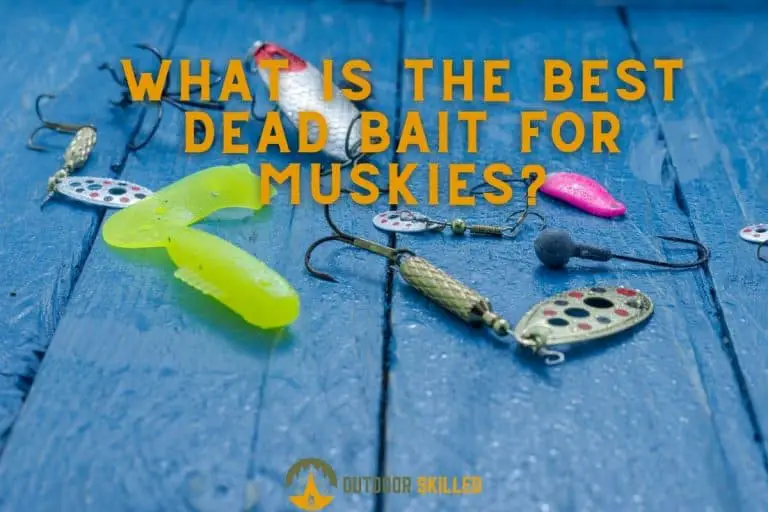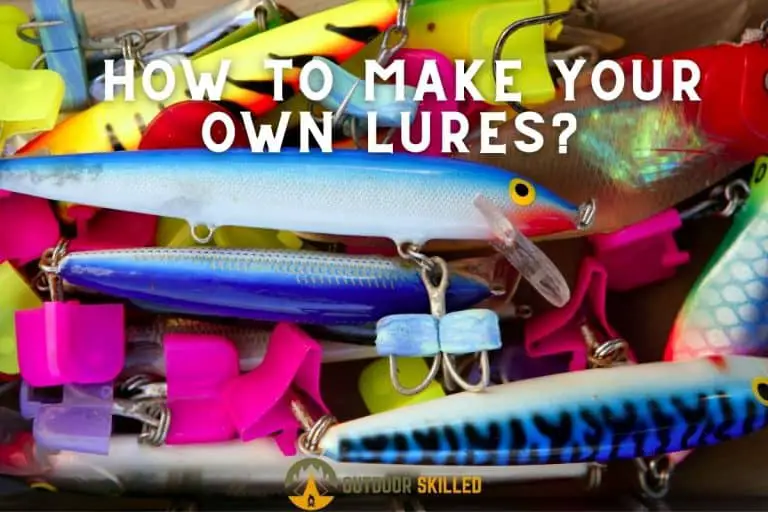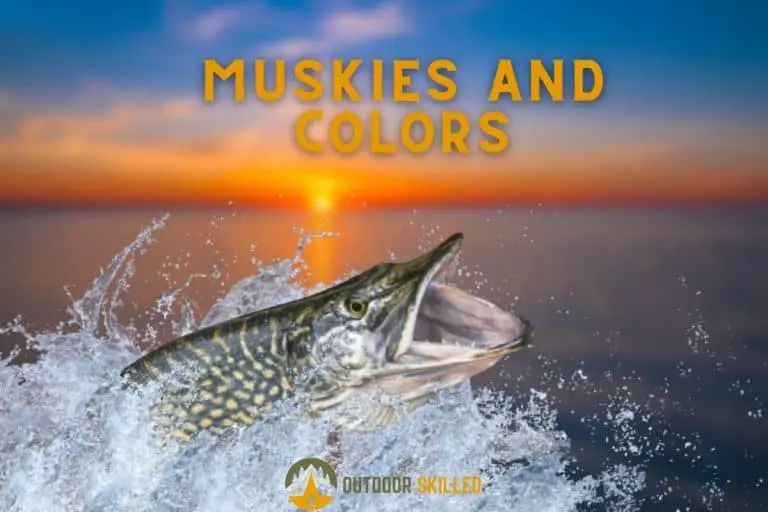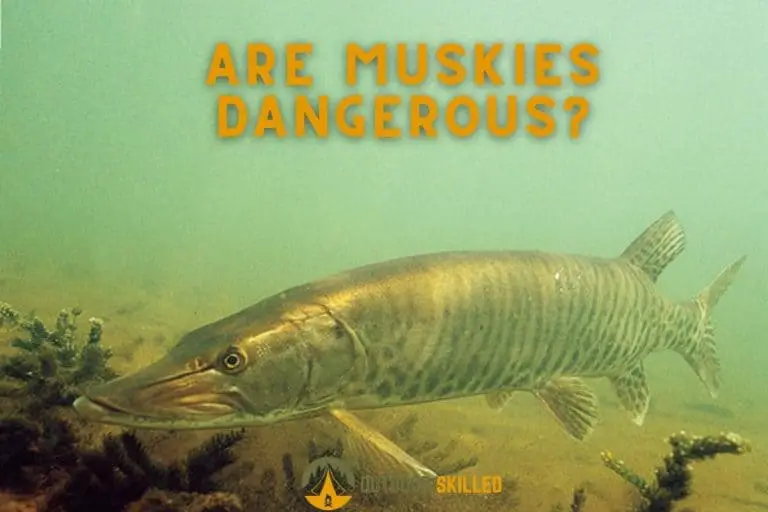Can You Eat Muskie? Try Out These 2 Tasty Recipes Today
Muskie, also commonly known as ugly pike, is a large fish usually found in freshwater that is particularly tough one to catch as they can put up a catch.
Because Muskies put up such a fight, many anglers wonder if they are even worth the effort and whether they are actually good to eat or even edible at all. So, what’s the deal with Muskie?
You can eat muskie. These enormous fish can be cooked just like any other kind of fish. You can grill, bake, pan-fry, or even steam muskie, depending on how you like your fish to taste. The most important thing is to clean and prepare the muskie properly before cooking it.
Keep reading to find out all about muskies; how to catch them, how to clean them, and most importantly, how to cook them.
Table of Contents
What Is Muskie?

Muskie is one of the most common freshwater fish in North America, which can be found in various lakes throughout the United States and Canada.
Muskies are large, strong fish with a torpedo-like form. They have big mouths and sharp teeth that they use for hunting. They often look a little frightening because of their predatory features.
Each fish has a strong rear tail that aids in its exceptionally quick swimming, and its fins are positioned behind the centerline. This predator fish also has two long fins on its back that it uses to leap out of the water and catch its prey.
The majority of muskies have a brown-green color and are spotted and striped. They might not be the most colorful or fun type of fish to look at, but this only helps them blend in well in areas where they can hunt.
Due to their ability to handle cool water temperatures, these fish prefer to reside in more northern settings. Fall is when they are most easily caught, but you can also catch Muskies in the spring if you know what you’re doing.
How to Catch Muskie?

Using Artificial Lures
Casting big artificial lures that are normally five to ten inches long or longer is the most common method for catching muskies. You can do this by standing in a boat that is drifting or motoring slowly through muskies’ habitat.
With this strategy, a lot of water can be covered quickly in such a short time. When fishing in shallow water, it is advised to keep your distance from muskie-holding areas. Long casts are preferred because they are less likely to scare off the muskies in these regions.
Some of the best lures for muskies include bright spinners, giant plastic crankbaits, large plastic tube-style jigs, and floating lures. These lures usually imitate wounded fish, which attracts muskies.
Propellers are also commonly used on floating muskie lures to provide realistic noise and splash. These large blades found on spinners produce realistic vibrations that draw muskies in.
Although some muskie lures might appear too big, they are completely normal to use. This is because muskies will eat any fish that is almost half their size.
Trolling
Trolling is another common method for catching muskies. To use this method, you would need large diving crankbaits that wobble. You can troll at rocky areas, weeds, underwater reefs, and other places muskies prefer to swim.
Muskies usually swim up to the lure without biting it. This is known as “follows.” While trolling, you should watch for fish trailing your bait. You can construct a “figure eight” with your bait at the side of your boat if a muskie does follow.
To use this method, you must reel your lure up to within one foot of the rod tip while keeping it submerged. Then, you must dip your rod tip into the water and sweep it in a figure-eight motion. If this results in an explosive strike, grab on tight!
I discuss this in more detail in my guides on how to troll for muskies at night and how to troll for suspended muskies.
Trawling
Trawling is when you use a fishing net to catch muskies or any fish, for that matter. For this method, you will need a sturdy, large fishing net.
Your success at catching muskies will rely on how tightly and thickly the weeds are packed into the water’s bottom area, so it’s important to pay close attention while trawling.
How to Clean Muskie?

Some people think that muskies are hard to clean because of their thick, Y-shaped bones, but cleaning muskies can actually be pretty simple. If you’ve ever cooked pike before, you’ll probably know what to do with muskies.
I have put together a simple guide for you to follow to get your muskie clean and ready to cook:
- Hold the muskie down tightly and start cutting from behind its head in front of the pectoral fin using a sharp knife. Stop when your knife hits the backbone.
- Flip your muskie over and repeat.
- Cut down the muskie’s backbone. Start at the front of the fish and stop when you hit the Y-shaped bone.
- Shove your knife through the muskie and cut through the tail.
- Cut through the Y-shaped bones at the front of the fish.
- Cut around the main ribs to remove the filet on both sides and remove the skin from the filets.
- Remove the section of the filet that was near the anus with your knife.
- Cut down the bones vertically until your knife hits the Y-shaped bones on top of each filet.
- Turn your fileting knife at a 45-degree angle and proceed to cut through the filet.
- Turn the filet over, cut through the meat halfway, and cut along the bone.
- You should now have three pieces of meat. Throw the piece with bones in the middle and keep the other two boneless ones.
Before cleaning any fish, it’s essential to learn how to keep it fresh after catching it. Check out my guide on killing fish instantly after catching it and keeping it fresh.
Can You Eat Muskie?
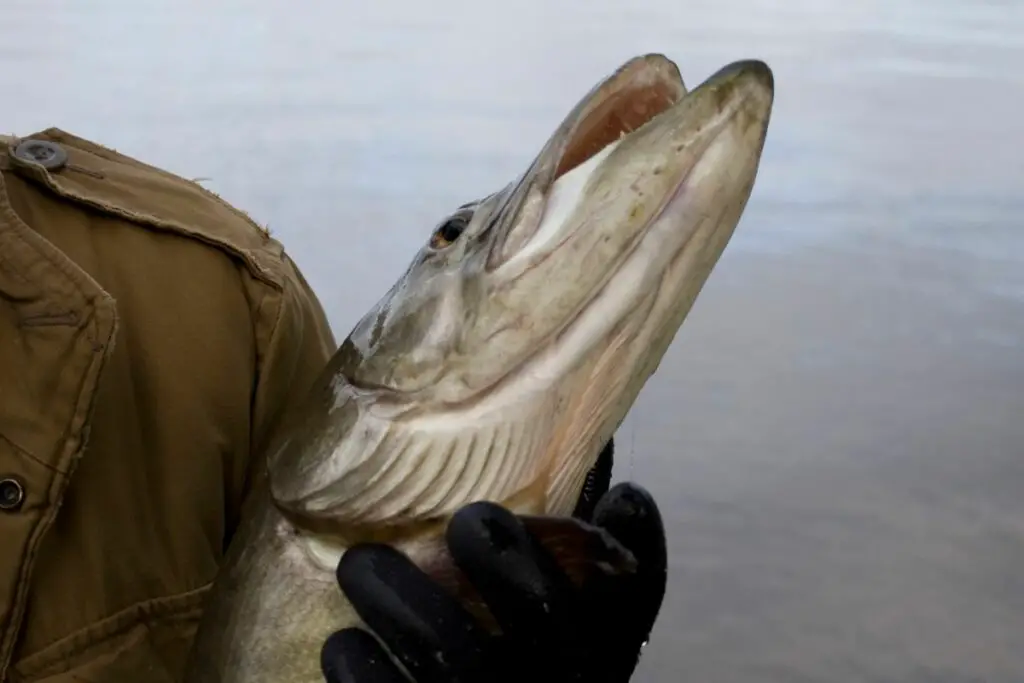
You can definitely eat muskie. It is pretty similar to pike because the muskie is part of the pike family. In fact, muskies are the largest species in the pike family.
Muskies can be cooked in several ways. They can be grilled, steamed, baked, or pan-fried. It all depends on your taste preference and how you normally like to cook your fish.
Although muskie has a nice taste, it might not make as much of a tasty meal as pike. It has a milder taste to it and is more of a bony fish. Because muskies have thick Y-shaped bones, they can also be a little difficult to clean.
Muskies can be a little challenging to catch because they are considered rare fish, especially in certain areas. So, if you are fishing for food, I would recommend keeping your options open, as you might not see as many muskies as you think.
Health Benefits of Eating Muskies
Muskies are low-carbohydrate fish. They contain 88% protein and 12% unsaturated fats and fatty amino acids, which are known to help the brain function better and can help prevent Alzheimer’s disease.
They also contain vitamin B12, potassium, thiamine, selenium, phosphorus, and manganese. This high-protein fish is completely safe to eat if caught in unpolluted water.
Are There Health Risks to Eating Muskies?
There are definitely some health risks when it comes to eating muskies if you do not clean and cook them the right way.
It is common for fish to have mercury contamination, especially predatory fish such as muskies. They get contaminated with mercury because of environmentally hazardous activities such as coal burning and iron mining.
Consuming too much mercury can poison humans and can lead to other health problems, such as tremors, numbness, uncontrollable shaking, pain in certain parts of the skin, double vision, or even blindness.
The Wisconsin Department of Natural Resources (WDNR) has stated that it is unsafe to eat muskie if you are:
- A child under 15 years old
- A nursing mom
- Pregnant
- Planning to have babies soon
It is advised only to eat one muskie meal a month. However, this doesn’t mean that you should eat 12 meals of muskie a year. A maximum of 6 meals of muskie a year is advised to save your health from mercury poisoning.
2 Muskie Recipes You Need to Try Out

If you like the taste of muskies, you are going to love the following recipes. If you did not like the taste of muskie the first time you tried it, you might want to give these amazing recipes a shot.
Buttery-Lime Basted Muskie with Spicy Tropical Sauce
Ingredients for the muskie and baste:
- 4 tablespoons of lime juice
- 3 tablespoons of butter
- 2 pounds of muskie filets
Ingredients for spicy orange-pineapple tropical sauce:
- 2 teaspoons of horseradish
- ½ cup of pineapple juice
- ¼ teaspoon of garlic powder
- ¼ teaspoon of coriander
- ⅔ cup of orange marmalade
- Preferred hot sauce
How to cook:
- Preheat the oven to 350°F (177°C).
- Mix all the sauce ingredients in a saucepan and cook on medium heat for 5 minutes.
- Melt the butter.
- Add the lime juice and butter to a bowl and mix them together.
- Place muskie filets in a baking tray and add the lime and butter mixture using a cooking brush.
Andrew Zimmern’s Muskie Cakes
Ingredients:
- 20 saltine crackers, finely crushed
- 1 tablespoon Worcestershire sauce
- 1 tablespoon Dijon mustard
- 1 pound pre-cooked muskie filets
- 1 large egg, beaten
- ½ teaspoon hot sauce
- ½ cup mayonnaise
- ¼ cup canola oil
- Lemon wedges
How to cook:
- Pre-cook the muskie by adding 1 pound of filets to a colander. Cover the muskie with aluminum foil.
- Place the colander over a pot of boiling water and steam for 8-10 minutes.
- Break the muskie filets with forks and set them aside.
- Whisk the wet ingredients together in a small bowl.
- Coat the pre-cooked muskie in cracker crumbs until they are completely coated.
- Fold in the wet mixture with a spatula.
- Cover and put it in the fridge for an hour.
- Pick up the mixture from the fridge and scoop them into eight patties in your hand. They should be 1 ½ inch thick.
- Heat the oil at 350 degrees in a large skillet and add the muskie patties.
- Cook over medium-high heat until they are golden. (3 minutes on each side)
- Serve with lemon wedges.
Related Questions
What Do Muskies Taste Like?
Some people claim that muskie tastes like bass, and others claim it tastes like pike. The way muskies taste depends mostly on how you cook them. Also, if you do not season them, muskies might taste pretty bland compared to other fish, such as salmon and tuna.
What Do Muskies Eat?
Muskies tend to eat various fish species, such as yellow perch, suckers, bluegills, golden shiners, walleyes, and smallmouth bass. They also eat ducklings, frogs, mice, and muskrats. To increase your chances of catching muskies, it’s recommended to use baitfish from their diet or cut bait.
All-Things Muskies
- Going Muskie Fishing? Get bigger catches quickly with these dead baits for Muskies and these effective lures for Muskies in all conditions.
- New to Muskie fishing? Learn how to make fishing for Muskies easier here.
- Explore the untapped potential for muskie fishing at night in this guide.
- Learn how to use live bluegill for super Muskies here.
Helpful Resources
A Primer on Muskie Fishing for Beginners
If you like this article, please share it or pin it, you can find the share buttons below. We will really appreciate it ❤️

